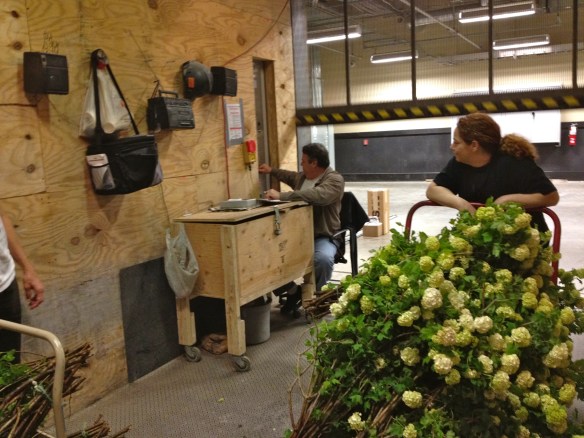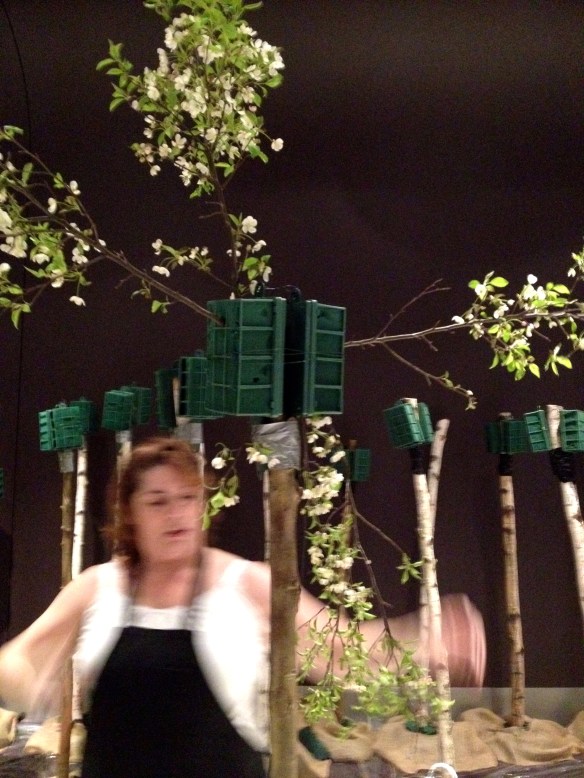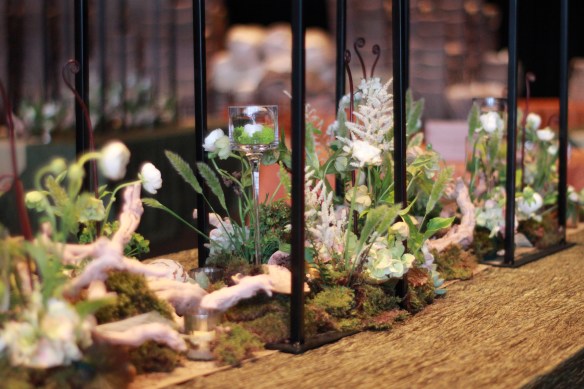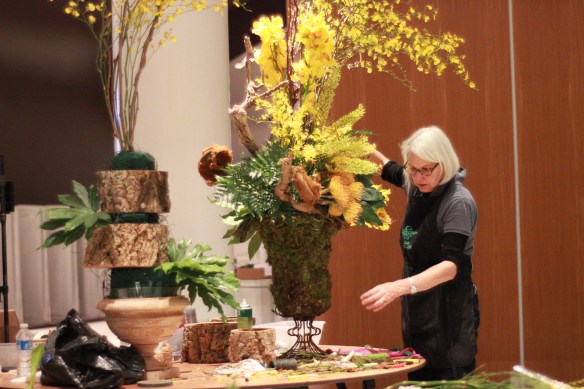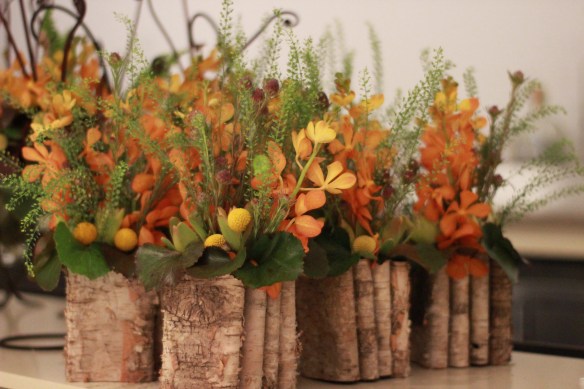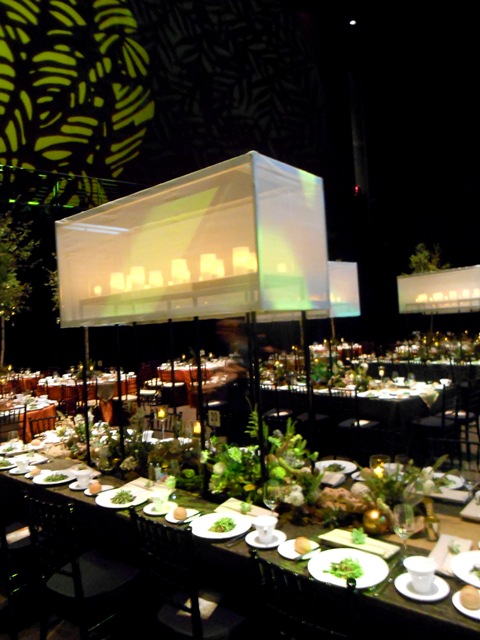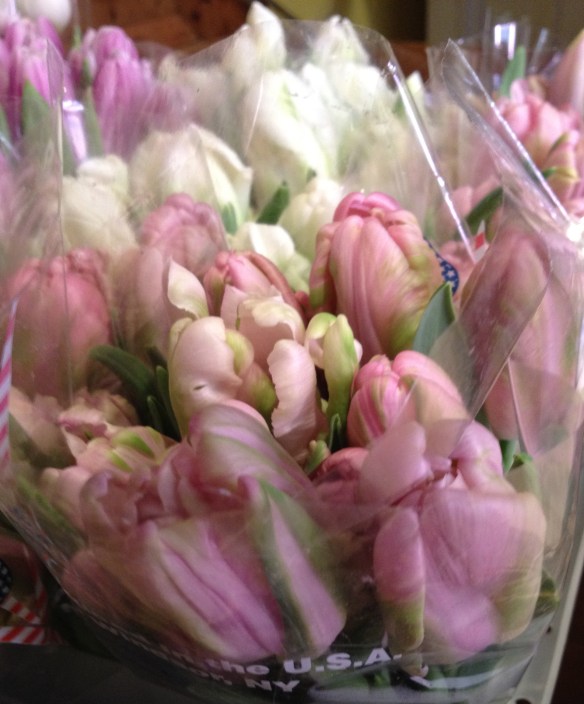I got hired to help out for a few days down in Atlantic City, NJ for a big job – a 1000 person benefit at the new casino, Revel, through Nancy Saam Flowers. (My teacher and friend Jane does a lot of freelance work for Nancy, and gave my name to her a while back.)
Encompassing 6.3 million square feet and standing 47 stories tall, Revel is a $2.4 billion lifestyle resort on the Boardwalk in Atlantic City.
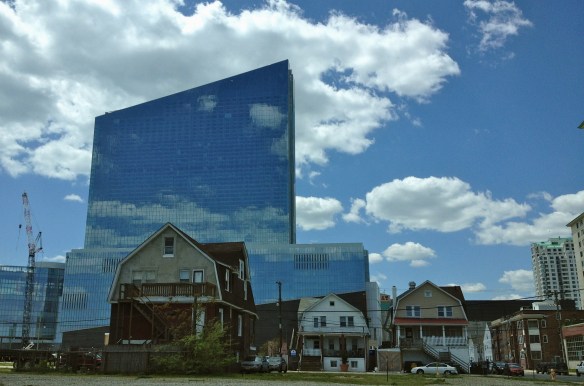 It’s an incredible building, and because everything is brand new, it literally sparkles inside and out. In some areas, it’s lush and dark in a 70s kind of way, in others, it’s bright and modern and clean.
It’s an incredible building, and because everything is brand new, it literally sparkles inside and out. In some areas, it’s lush and dark in a 70s kind of way, in others, it’s bright and modern and clean.
And good luck finding your way around! I think I must have walked 10 miles in the course of the 3 days I was there. Beyoncé will be singing there for the casino’s premiere opening at the end of May, and tickets to see her in Ovation Hall (where our benefit was held) are $700. I’m not even kidding.
The scope of this project was enormous: under the guidance of Nancy Saam, our fearless leader, I worked with a dozen or so other designers to create 73 woodland “tablescapes” for long tables, and almost 50 six foot ‘trees’ with mini gardens on their bases for round tables. All the plant material for these designs had to be hauled up the freight elevator and processed upon arrival.
First we started on the long tables. All 73 tables would take a few days to complete.
We covered the table runners with many non-floral elements to create structure, depth, texture, and pattern: long pieces of grape wood, loads of sheet and mood moss, spheres of many types, succulents, votives, gold artichokes and pods, and skeleton leaves. Within these items, we also laid out pre-soaked floral foam blocks in various sized liners and covered those with moss and galax leaf. The floral foam would then be filled with a variety of cut flowers and woodland treasures closer to the event.
With the tablescape structures mainly in place, we called it a day. One of the challenges of this job was working on a floor that needed to remain pristine. We put down drop cloths wherever we went and there was a lot of sweeping and mopping!
The next day was all about making the trees – and they were quite a construction project! For the bases, burlap was cut to fit over sleek Xmas tree stands. Long birch trunks were then placed into the stands.
We divided up into 2-person teams to duct-tape wired cages containing pre-soaked floral foam to the tops of these trunks, making them look a little like stoplights in a forest.
After placing a bit of lemon leaf to hide the lower mechanics, we then began designing tree top after tree top using flowering crabapple branches. Here’s what I did over and over again: select branch, cut to length, prune off small branches by the end, and place them in the foam. It’s fun!
Eventually, the trees start taking shape, filling out like elven lollipops.
As we were completing the branch structures of the trees, other designers under the guidance of Armas, a designer from moda botanica in Philly, began creating the little woodland gardens at their bases. I got to pitch in at the end, too, tucking many lovely plant treasures into wedges of foam then obscured by moss.

Fern, fiddlehead, hellebore, orchid, hydrangea, veronica, chocolate cosmos, succulents, and much more
The next day, we filled in any holes on the trees, completed more woodland bases, and added more magical touches, like hanging votives filled with reindeer moss.
Then it was back to the tables, to finish the tablescapes on the tables that had been brought out to Ovation Hall. We filled in the floral foam sections with a host of delicious plant materials such as fern, long purple fiddleheads, antique hydrangea, bunny tail, euphorbia, hellebore, white astilbe, white scabiosa, and white ranunculus. The end result was a tablescape that any woodland nymph would be proud to lounge about on!
Meanwhile, Jane Godshalk spent her day designing with tropicals for the cocktail area.
Designers also created 18 tall glass vases of viburnum and branches for round tables.
Armas created many of the cocktail arrangements, which were whimsical and woodsy at the same time.
Since Jane and a lot of other very talented designers were there, I was surrounded by expertise, and although we were working hard, I also got to ask questions and learn as much as I could. It was exhausting and exhilarating. I didn’t get to see the final end result of our work, but today I received some pics of the event…WOW! Great job everyone!
Here’s hoping there are many more successful events like this one in my floral future!
P.S. Most of these pics were taken after I was done for the day or on a lunch break.





